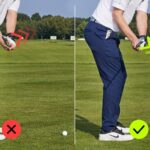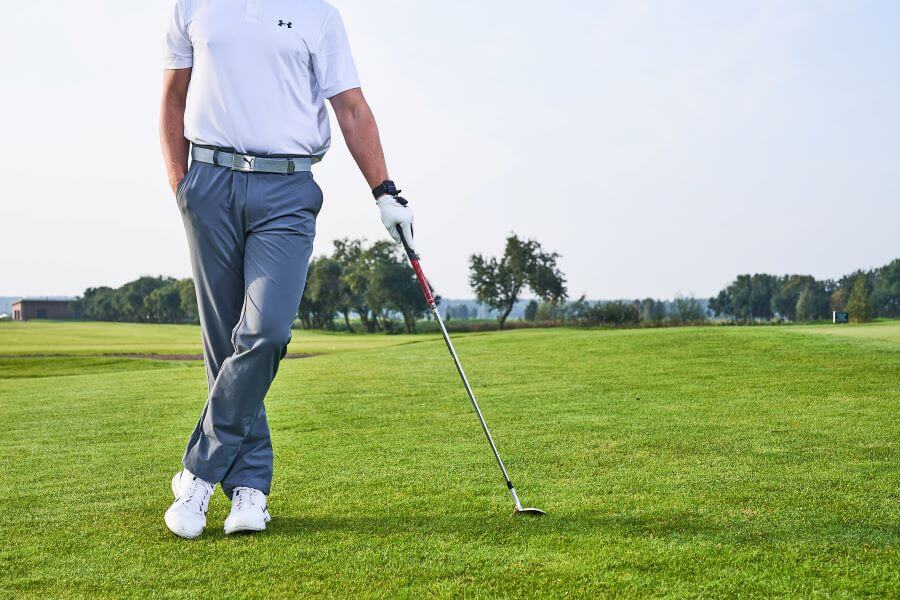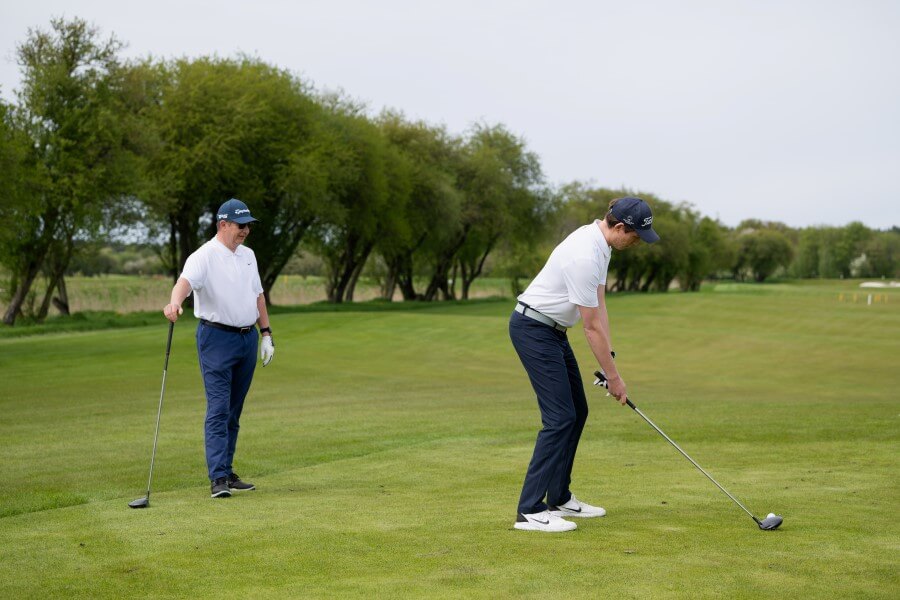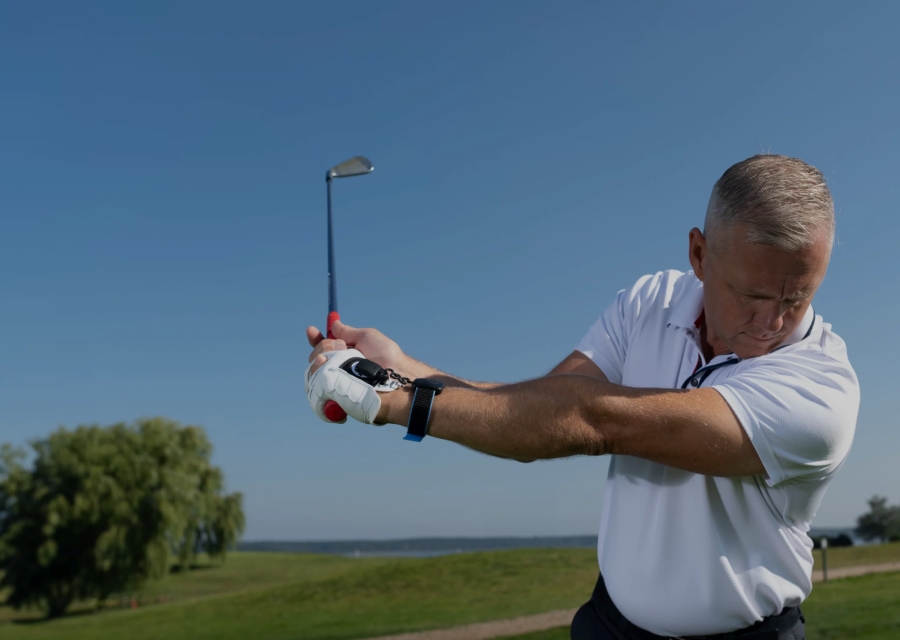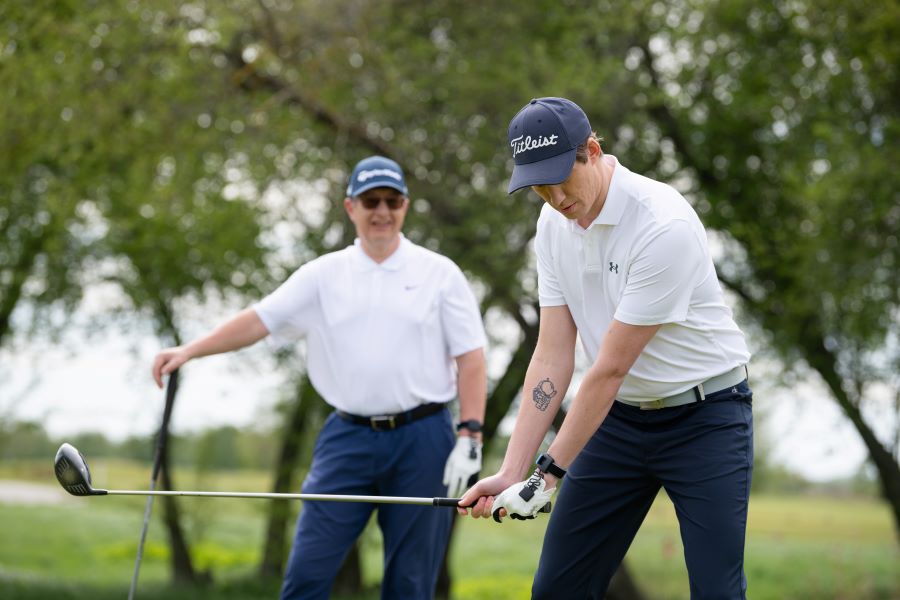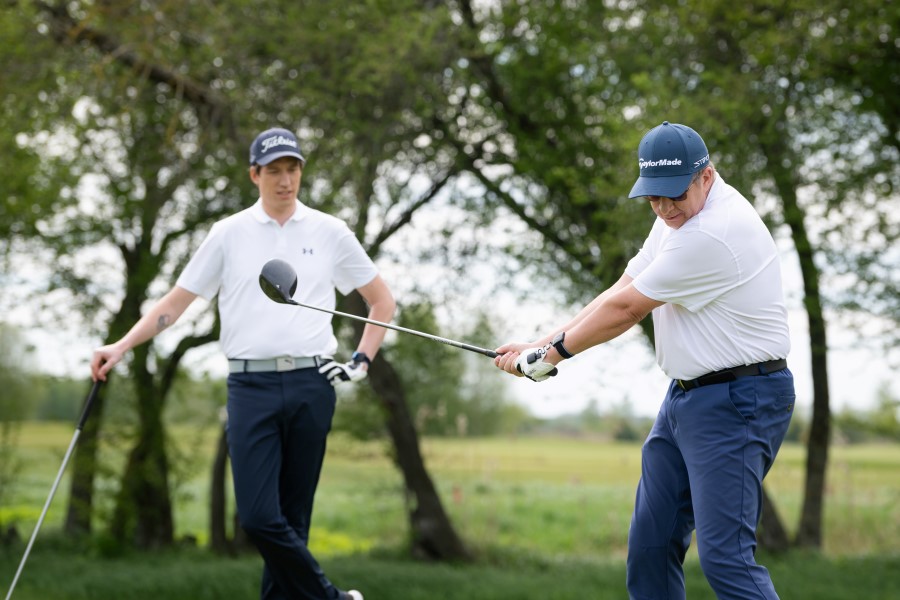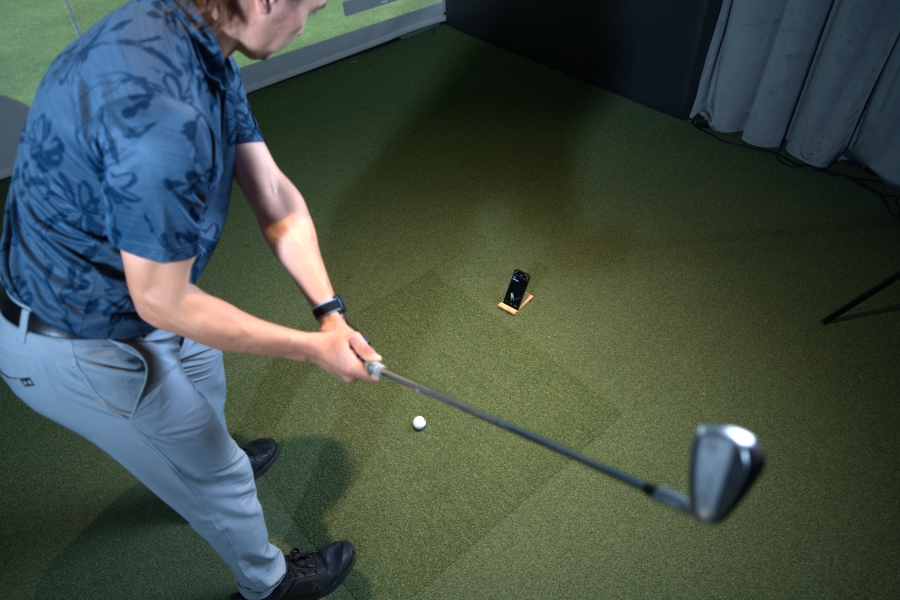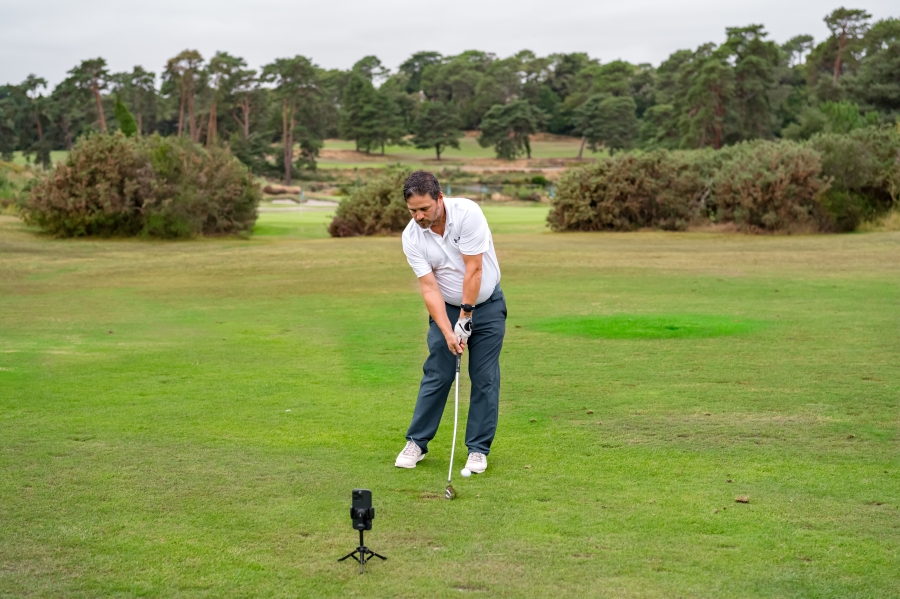How to Compress the Golf Ball with Irons: A Step-by-Step Guide & Drills
If you’re tired of hitting thin, weak, or inconsistent iron shots, there’s a good chance you’re not compressing the golf ball properly.
Compression doesn’t happen by accident, and it doesn’t mean swinging harder. Many golfers try to help the ball into the air when in reality, you need to hit down to make it go up.
To compress the ball, you need forward shaft lean, the right ball position, and a flexed lead wrist at impact.
With a few small adjustments and the right practice drills, you can start striking your irons like a pro and compressing the ball.
How to Compress Your Iron Shots (Key Takeaways)
Save this guide for the next time you head to the driving range with your HackMotion. Until then, here are the key takeaways:
- To compress a golf ball with your irons, you need forward shaft lean and a slightly flexed lead wrist position at impact.
- Make sure your weight has transferred to the front foot to get a cleaner strike.
- Keep the ball from getting too far forward in the stance.
- Don’t let the golf club get too shallow on the takeaway; the angle of attack will not be steep enough to compress the golf ball.
- Use your HackMotion to practice hitting punch and knock-down shots, and record those wrist positions to see what it takes to compress your iron shots.
If you prefer to learn by watching a video, here is a guide from Rob Cheney detailing how to compress a golf ball and the importance of that forward shaft lean.
Contents
How to Compress a Golf Ball with Irons
Some golfers feel like they can compress the golf ball one day and struggle with it the next.
If you have worked on compressing a golf ball with irons with little success, it could be for any one of these reasons.
Work through these steps on how to compress irons, and you should find the issue causing the trouble.
Maintain a Forward Shaft Lean
At impact, your hands should be slightly ahead of the clubhead; this is known as forward shaft lean.
You’ll notice the shaft leaning a bit toward the target, helping you hit down and through the ball for solid compression.
One of the biggest mistakes amateurs make is flipping their wrists before impact. Often, it’s an attempt to help the ball in the air or save an open clubface, but it usually results in thin or topped shots.
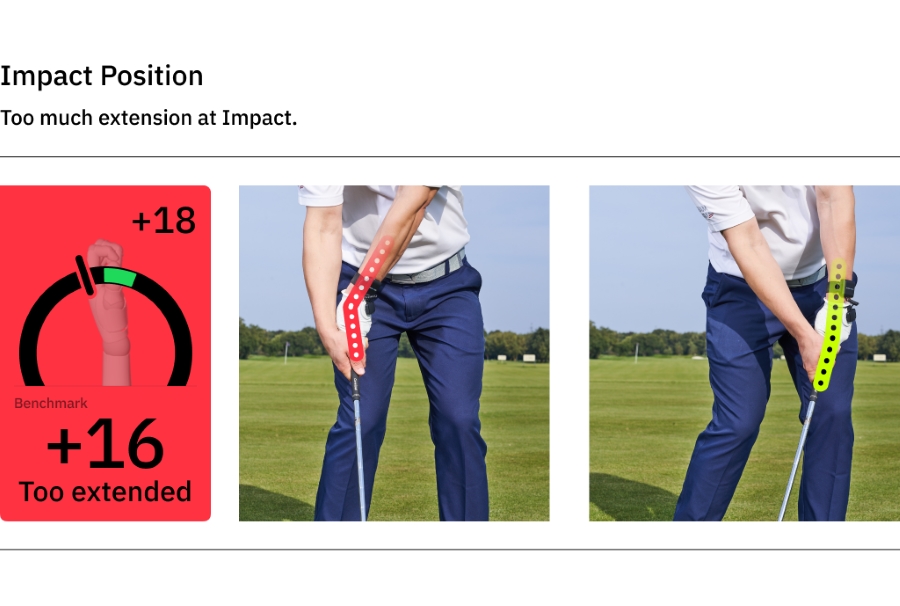
A great way to work on forward shaft lean is by practicing short chip shots with something like an 8-iron. Take a half swing back and a half swing through, focusing on keeping your hands just ahead of the clubhead through impact.
Be careful not to overdo the shaft lean at setup, though; too much can shut the face and make the club harder to control.
Wearing HackMotion while working on this drill can provide real-time feedback on your wrist angles, helping you develop the right feel and stay consistent, much like having a coach right there with you.
Get the Swing Plane Correct
The swing plane needs to be perfect if you want to compress the golf ball.
There are two issues you can run into here:
- An angle of attack that is too steep causes you to flip right before the ball.
- An angle of attack that is too shallow and isn’t moving down enough through impact.
To get the swing plane correct, you can use alignment sticks and even video to ensure that you are neither too steep nor too shallow.
However, the easiest way to correct the swing plane is to have a flat lead wrist at the top of the backswing. From this position, your swing plane is forced onto the proper path.
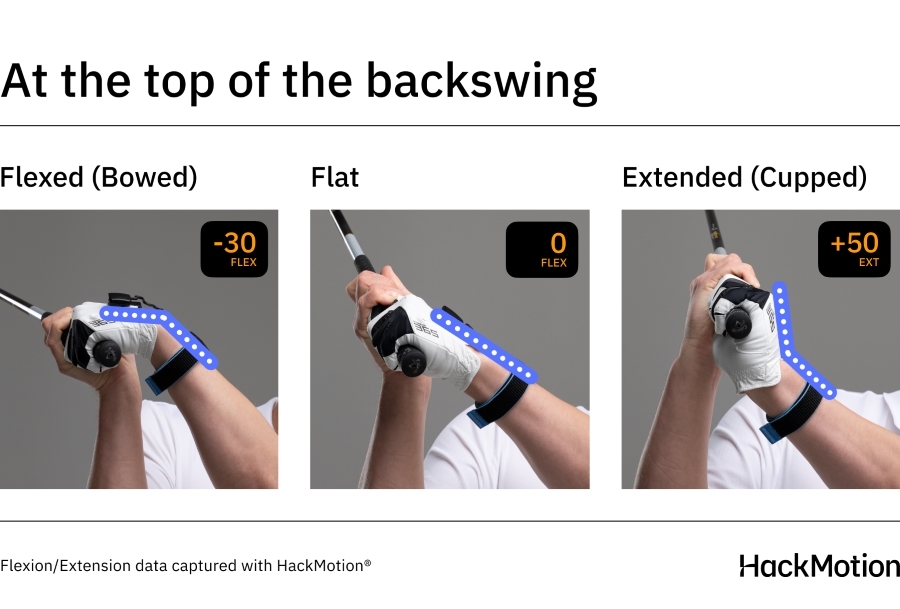
HackMotion can help you see if your wrist is getting too extended on the backswing or too flexed, causing the club to move from the proper plane.
Lead Wrist Flexed at Impact
Once your swing plane is on track and the lead wrist is flat at the top, your goal is to move into impact with that lead wrist flexed (bowed).
This flexion helps square, or even slightly close, the clubface at impact, leading to a more compressed strike.
Wearing your HackMotion is the easiest way to track and train the correct wrist position in real time. Work on the HackMotion Motorcycle Drill built into the app. It gives you real time feedback as to your position.
Motorcycle Drill – Master Wrist Flexion in the Downswing
Use this drill to train proper lead wrist flexion in the downswing.
HackMotion Motorcycle Drill – Step by Step:
- Set Up: Address the ball as usual.
- Downswing Flexion: As you start the downswing, begin adding lead wrist flexion, like revving a motorcycle, so that by the time the club reaches parallel to the ground (P6), you’ve achieved your desired angle.
- Continue to Impact: Keep that flexion through the ball, then let your body and arms release naturally.
- Experiment with Speed: Start slow to feel the move, then gradually speed up while keeping the right wrist angles.
- Reps Without a Ball: You can also do this drill without hitting shots—just rehearse the motion to build muscle memory.
- Find Your Sweet Spot: Too much or too little flexion can hurt your strike. Use HackMotion to dial in your ideal amount.
Check Your Ball Position
While working on your compression, don’t neglect the ball position.
Compressing a mid-iron shot is difficult if the ball is too far forward in your stance. You’ll miss that perfect location to strike the ball on a steeper path.
Some golfers tend to push the ball too far forward in the stance, which creates thin shots that you can’t compress.
When working on compression, keep the ball in the middle of the stance.
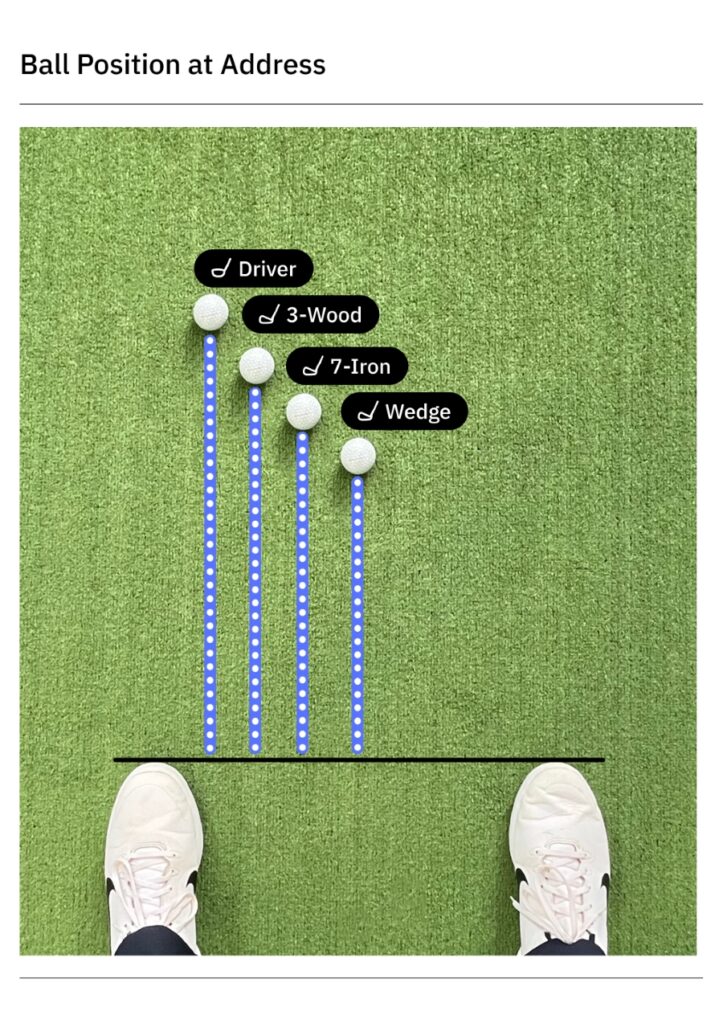
Use the Lower Body
Compressing your irons by using arms and hands only is generally inconsistent. You’ll have to incorporate the lower body to compress the ball each time.
When your lower body turns, it helps to pull the club down towards the ground and improve the compression you make with your irons.
From the top of your backswing with a flat lead wrist, use your lower body to turn and initiate the downswing. Practice this in slow motion and feel the weight transfer to your lead side.
You’ll notice the club approaches on the proper path and at the correct angle to compress the golf ball.
Drills to Compress a Golf Ball with Irons
If you need some additional ways to work on compressing the golf ball with your irons, here are a few of our favorite drills.
Want someone to walk you through drills that actually help you hit down and through the ball? Look into golf lessons with coaches who use HackMotion for clear, simple feedback.
Punch Shot Drill
This drill is designed to teach forward shaft lean and eliminate the flip at impact, two essentials for compressing your iron shots.
By stopping the clubhead shortly after impact, you’re forced to deliver the ball with a flexed lead wrist and square face.
It’s especially helpful when paired with HackMotion, which lets you monitor your wrist angles.
Punch Shot Drill – Step by Step:
- Set Up: Use a mid or short iron and set up with a slight forward shaft lean.
- Swing Thought: Focus on leading with the hands, your goal is to keep the clubhead trailing into impact.
- Impact Goal: Deliver the ball with a flexed lead wrist and square face.
- Abbreviated Follow Through: After impact, stop the club shortly, like a long chip shot or punch.
- Ball Flight Feedback: Look for a lower, penetrating ball flight with a slight draw. That’s your sign you compressed it correctly.
- Track with HackMotion: Monitor wrist angles during the swing. Look to go from a slight extension at setup to flexion at the top and even more at impact.
Smart Ball Arm Squeeze Drill
If you tend to hit thin iron shots, it’s often because your arms and wrists are working against each other, causing you to lose structure in the downswing.
The Smart Ball Arm Squeeze Drill helps you maintain arm connection and compress the ball with more consistent wrist angles.
By squeezing the ball between your arms, you’ll naturally control your swing radius and improve wrist flexion at impact.
Smart Ball Arm Squeeze Drill – Step by Step:
- Setup: Place a Smart Ball (or any inflatable training ball) between your forearms and take your normal address position.
- Backswing: Keep the ball in place during the backswing to encourage proper arm connection.
- Downswing Focus: As you transition into the downswing, actively squeeze your elbows together to maintain arm structure.
- Impact & Follow Through: Continue squeezing through impact and into the follow-through to support proper wrist angles and shaft lean.
- Track Progress with HackMotion: You should see lead wrist extension reduce significantly from setup to impact. For example, going from 24° of extension to under 5° shows solid wrist flexion.
Towel Compression Drill
Many golfers struggle to compress the ball simply because they release their wrist angles too early, adding loft, losing distance, and making weak contact.
The Towel Compression Drill is a simple but powerful way to train forward shaft lean and proper wrist flexion at impact.
Towel Compression Drill – Step by Step:
- Set Up: Place a towel on the ground about one grip length behind the ball.
- Why It Works: The towel acts as an obstacle; if you flip your wrists or lose shaft lean, you’ll hit it before the ball.
- Impact Goal: Deliver the clubhead without touching the towel, using forward shaft lean and a flexed lead wrist.
- Wrist Position: Move from slight extension at setup to neutral or flexed at impact. HackMotion will show your progress in degrees (e.g., from +20° extension to 0° or -5° flexion).
- Start Slow: Begin with small swings and increase speed as you get consistent with avoiding the towel.
- Immediate Feedback: If you’re flipping, you’ll know right away—use that to adjust and repeat.
Final Thoughts
Compressing a golf iron is a great feeling, and when you get it down, you’ll be glad you put the time in to learn it. HackMotion helps make it easier to compress your golf shots and feel more consistent in your ball striking.
Bring your HackMotion to the range with you and wear it until you can get that flexed lead wrist at impact. It will make all the difference when trying to get the feeling of compressing your irons.



